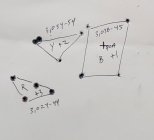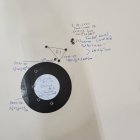CharlieNC
Gold $$ Contributor
This is is the kind of candor that sets up advancement of the ball. It is very hard to distill explanations with a thick tube of steel and velocity in the way of visual observations.
We do know that bullets follow natural laws as they are just faster thrown rocks, at the end of the day. (I’m not being glib, generalizing just from a couple different 700’s in the closet, I’m mainly Fclass but I build up and shoot match guns from .22 to BMG, for myself, with backyard shooting ability exceeding ELR match distance.)
While we don’t know all the whys, tuning explanations that don’t follow the reality of physics, cannot be the reason behind the veil. If I were to cut the end of the nose off a bullet, and I have done this, it would be lighter, and leave the muzzle faster. It would have a lower BC, and yes, that means it would converge at some distance with a perfect bullet. (When I did this, and more, I really restrained myself from saying a thing or two about 100 yard BR).
But identical bullets, shot at different velocities, diverge immediately, and continuously, from the barrel onward. I’m not saying it’s a lot, just that it’s true. It would be hard for guys here to agree on much, if they don’t agree with this precept.
But those identical bullets leaving at different velocities also exit the barrel at a different barrel time, and therefore different point in the barrel's vibration cycle. And when properly timed the vertical poi is the same due to positive compensation, unless you don't believe in that.













